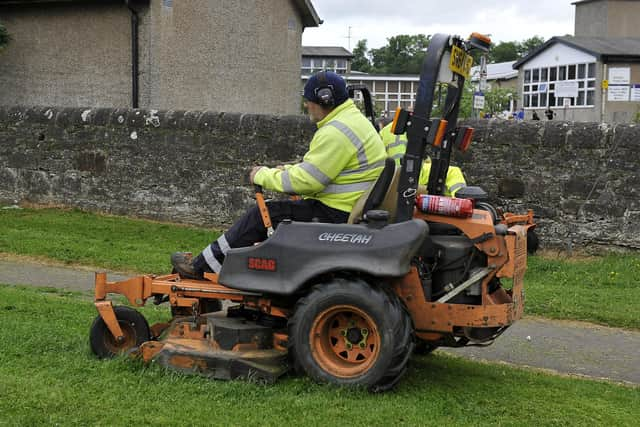Have your say on Falkirk’s pilot project on district’s green spaces
and live on Freeview channel 276
From leaving roadside verges and some parkland grass to grow longer to planting more trees, bulbs and wildflowers, the chances are you will have noticed a few changes whichever part of the district you live in.
The aim is to combat climate change, increase biodiversity and even reduce flooding.
Advertisement
Hide AdAdvertisement
Hide AdNow, Falkirk Council would like feedback from communities on how they feel the pilot is working - and where it isn't.


"We're really keen that we get as much feedback as possible from people," said biodiversity officer Anna Perks.
"It very much is a year of learning for us, about what was most effective and what we might want to change in the future."
Councillors, who approved the changes earlier this year, were supportive but made it clear that communicating with communities was key to changes that might not meet everyone's approval.
Advertisement
Hide AdAdvertisement
Hide AdSo, Anna is keen to hear where the changes are problematic, for example if there is long grass on a route children use to walk to school.
But she says that much of the feedback has been very positive.
In fact, the project was kickstarted in earnest during the first Coronavirus lockdown when council land was left to grow wild due to the strict restrictions.
The response, however, was surprisingly enthusiastic.
"We saw from Covid how important our green spaces are for health and wellbeing and for people to get out and connect with nature and have that access to open space," said Anna.
Advertisement
Hide AdAdvertisement
Hide Ad"People were telling us how much they liked the grass and flowers left long."
That was crucial as the council had just declared a climate emergency and plants and trees are absolutely vital to reducing CO2.
So, 35 sites across the district were chosen for the pilot study, including Falkirk's Dollar Park and the Gala Park in Denny, the A9 distributor road and Gray Buchanan Park in Polmont.
Some areas have been left to grow naturally, in others grass has been cut less frequently and in some wildflowers or spring bulbs have been planted.
Advertisement
Hide AdAdvertisement
Hide AdThis is leading to more insects, which in turn means more birds, bats and lots of other wildlife.
Some community groups are already involved and Anna would be keen to hear from others who are interested in helping with things such as planting trees and bulbs.
The changes are only just beginning to be noticeable - but Anna says it doesn't take long to make a difference.
In a previous study of a newly planted meadow, she spotted in one short visit 23 different species of wildflower and 29 different invertebrate species along with sparrowhawk, swallows and deer.
Advertisement
Hide AdAdvertisement
Hide Ad"It was fantastic to see - and that was just in a quick, snapshot visit," said Anna.
Councillor Paul Garner, spokesperson for the environment, said: "I'm really excited to see how it will look. I see some of the roadside verges in other areas - for example in Fife - and they look fantastic!"
To give feedback, visit Falkirk Council's website.
